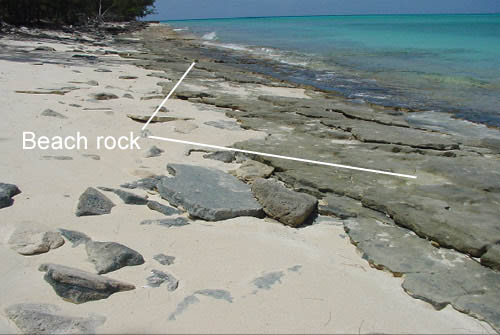| |
| Beach Depositional Environments
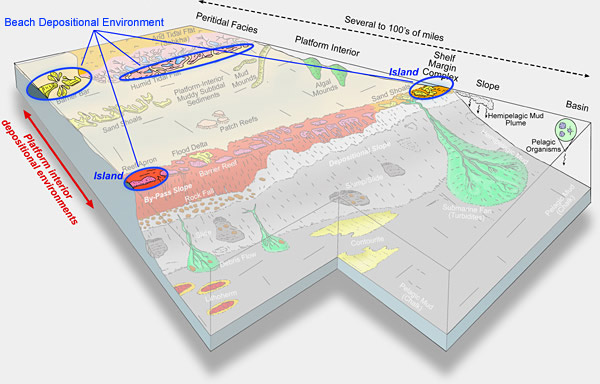
| Inden
and Moore (1983) defines beaches as wave-dominated systems.
Beaches can occur attached to land or rimming leeward and/or
windward sides of islands. They can occur anywhere on a platform
where there is an area above sea level that is exposed to
moderate-to-high wave energy. They are not unique to any one
area. |
| |
| The beach
system can be divided into several depositional environments: |
| Place
cursor over each zone button to see corresponding features |
 |
This
is a lower energy environment where biological processes
become more important than physical processes. Bioturbated
sands to muddy sands are deposited. |
 |
Forms
in the surf zone producing wave-breaker bars that are
oriented obliquely to the shoreline and generate medium-scale,
trough crossbeds |
 |
Forms
in the swash zone and is composed of seaward dipping
planar wedge sets of thin, even laminae where the sediment
is sand sized. Keystone vugs created by trapped air
are a commonly characteristic of this facies. Beaches
can be composed of gravel to boulder-sized material
where they are located landward of a source of coral. |
 |
A
narrow terrace at the upper part of the foreshore of
a beach produced by waves. |
 |
Composed
of landward tilted planar wedge sets with some trough
crossbeds where water is funneled along the trough of
the back beach. |
 |
Back
sides of beaches can be dominated by several environments
including eolian dunes, washover fans, supratidal flats,
and pond sediments. |
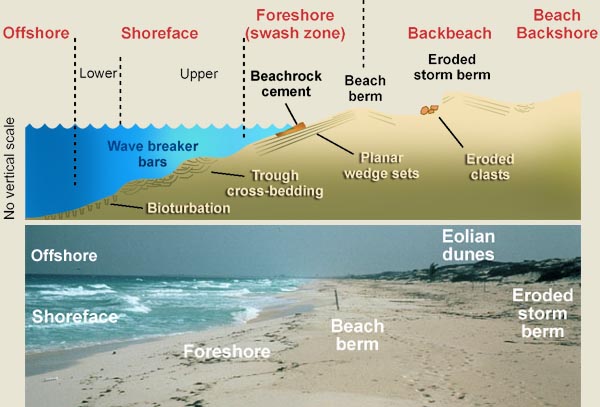
|
|
| |
|
|
| Beach
rock, produced by cementation in the surf/swash zone,
is a common feature on carbonate beaches. It appears as lithified
seaward dipping beds. |
|
| |
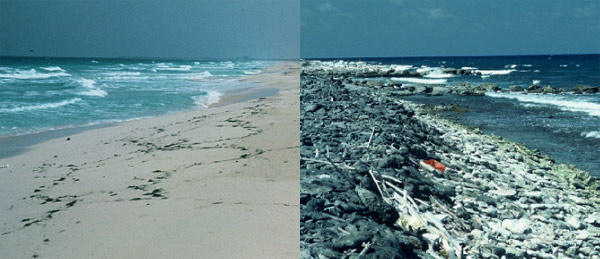 |
Fine-grained,
high-energy ooid beach facing the open sea in Cancun,
Mexico.
|
High-energy
beach composed of coarse coral debris on the east
side of Bonaire (southern Caribbean) facing the
open sea.
|
|
| |
| Beaches
can occur in many different locations on the platform. Several
examples are shown below. |
| |
|
click
on beach types to see example photographs |
| |
| |
| Rock
types: |
| |
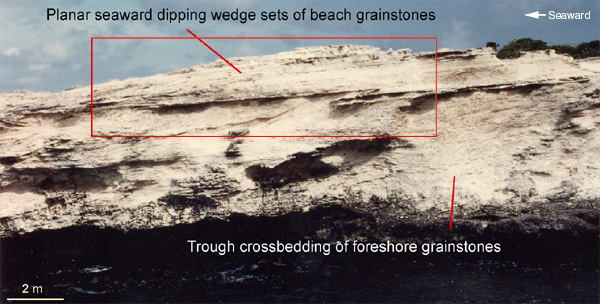 |
| Pleistocene
outcrop of a shoreface (trough crossbedding) and foreshore-beach
bedding (seaward dipping planar wedge sets) from West Caicos
Island in the Turks and Caicos Islands. |
| |
|
| |
 |
| Cross-sectional
view through a prograding beach complex in central Texas. Progradation
of individual beach complexes is to the right. Four stages of beach
development are displayed. The oldest beach is on the left and the
youngest beach (part eroded) is on the right. Individual beach cycles
show the morphological forms of backbeach, beach berm, and foreshore.
Height of beach crest on the left is 2 feet. From Kerans and Loucks
(2002). click on red box for additional
detail |
|







